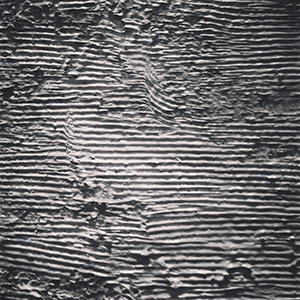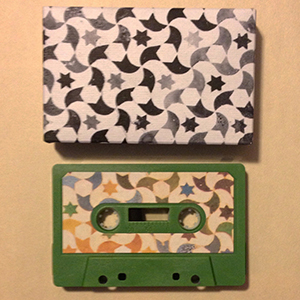 With these two near-simultaneous releases, Joao Da Silva's Luciernaga takes two different approaches to his not quite noise, not quite musical. To the Centre of the City in the Night is the more fleshed out release, with its five pieces running the gamut from bowed string drones to harsher electronics. Tile II, a follow up to the similarly titled release from last year is more immediate, which is fitting a super-limited tape and free digital release. They are two sides of the same coin, with both being enthralling in their own ways.
With these two near-simultaneous releases, Joao Da Silva's Luciernaga takes two different approaches to his not quite noise, not quite musical. To the Centre of the City in the Night is the more fleshed out release, with its five pieces running the gamut from bowed string drones to harsher electronics. Tile II, a follow up to the similarly titled release from last year is more immediate, which is fitting a super-limited tape and free digital release. They are two sides of the same coin, with both being enthralling in their own ways.
Invisible City Records/Idle Chatter
To the Centre is the more album-like of these two releases, in that it feels as if these pieces were more carefully constructed and composed over a longer period of time.Using only synth, guitar, and his voice, Da Silva creates dynamic and multi-layered pieces that are constructed and deconstructed throughout."A Blue Light" features droning tones paired with shimmering electronics and a hint of noise.There is a progression from purer sounds at the beginning into fragmented and decaying passages towards its end.There was a hint of darkness to that piece, but "Sleeping Green-Eyed Girl" is almost all-peaceful beauty.Loops and beautiful drones make for a dynamic song, but in a calm and placid mood.Even though it is heavily drawn from from electronic sources, it has an extensively organic sound, resembling a living and breathing organism.
The other half of To the Centre is a darker affair.Deep synth and squalling guitar set a darker, menacing mood to "Cold was the Night".With all its scraping and gliding noises, it is the sonic equivalent of a serpent slithering through metal wreckage and barbed wire.The lengthy "Elevated" might not be quite as sinister, but is no less intense.A more hypnotic, loop heavy piece with messy outbursts to keep the sound from becoming too stagnant, Da Silva uses the extended duration to build the piece and allow a bit of light to shine through the otherwise dark haze.
 Tile II, on the other hand, comes together as a more immediate, almost improvised sounding work in that the pieces are more sparse, but also have their own minimalist charm.The chiming singing bowl that opens "Mourning Raga", mixed with a harmonium-like drone has a simple, yet meditative quality to it.The two part "Serpentine" sees Da Silva emphasizing clean guitar over what sounds like a slowly changing and evolving loop.The mix may be simple, but the sound is extremely complex.The second part uses a more primal guitar sound that adds dissonance to the overall sound.Like its predecessor, the second side of the tape is a single loop played for nearly 15 minutes with enough complexity to be hypnotic without being overly repetitive.
Tile II, on the other hand, comes together as a more immediate, almost improvised sounding work in that the pieces are more sparse, but also have their own minimalist charm.The chiming singing bowl that opens "Mourning Raga", mixed with a harmonium-like drone has a simple, yet meditative quality to it.The two part "Serpentine" sees Da Silva emphasizing clean guitar over what sounds like a slowly changing and evolving loop.The mix may be simple, but the sound is extremely complex.The second part uses a more primal guitar sound that adds dissonance to the overall sound.Like its predecessor, the second side of the tape is a single loop played for nearly 15 minutes with enough complexity to be hypnotic without being overly repetitive.
Both sides of the Luciernaga sound captured on these tapes complement each other extremely well, and I could not choose one as superior to the other.The more composed sound of To the Centre captivates with the constantly shifting mix and varying dynamic, with each listen revealing an additional layer of depth.At the same time, Tile II’s minimalist, almost live sound has a distinct purity and clarity that hits all the right buttons.Either way, both are exceptional and Da Silva is an artist who continues to impress me with each new release I hear.
samples:
 
Read More

